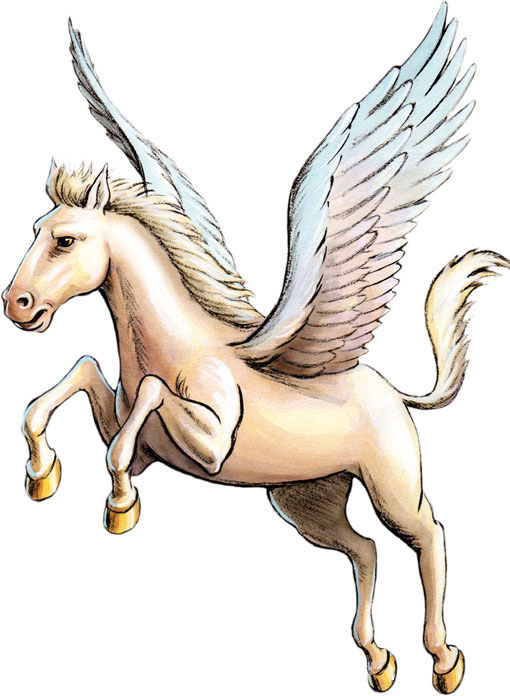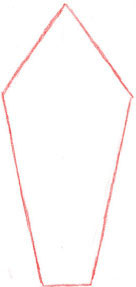Contents
Introduction
Part 1: Heads
Horses Heads
Unicorns Heads
Heraldic Unicorn Head
Eyes
Ears and Noses
Unicorn Portrait
Dragons Head
Dragon Variations
Human Heads
Human Creature Heads
Part 2: Bodies
Basic Anatomy
Proportions
Pose and Locomotion
Unicorn Running
Heraldic Unicorn
Horses in Perspective
Foals
Unicorn Foal
Forest Unicorn
Hippocamp
Part 3: Human Hybrid Creatures
The Human Body
Mermaid
Centaurine
Sagittarius
Minotaur
Troll
Part 4: Winged Creatures
Sphinx
Harpy
Phoenix
Winged Horse
Griffin
Part 5: Reptilian Creatures
Dragon Design
Color Theory
Chinese Dragon
Basilisk
Combining Creatures
Introduction
Unicorns come to us via ancient illustrations based on travelers unreliable reports of rhinoceroses, giraffes, and antelopes, and they sit alongside dragons, satyrs, mermaids, and other fabulous creatures such as winged horses, in ancient bestiaries. Descriptions of unicorns varied according to the times and cultures in which they were described; from small, playful and deerlike to stocky and powerful like cattle. For the purposes of this slim volume, however, we will concentrate mainly on the familiar concept of unicorns as equine creatures of grace and beauty.
As with every other subject, drawing fantasy animals is mostly about drawing. And for drawing you need nothing more than a willingness to apply yourself to the task and a very few basic bits of kit:
Pencils. Two or three will suffice, a hard one, say H or 2H for guidelines, and a couple of softer pencils, maybe a B and a 4B for heavier lines and shading. (For the sake of visibility in this book, I have drawn all guidelines and under drawing a lot more heavily than I would recommend. Generally, I suggest drawing them lightly with a hard pencil so that they may be easily and cleanly erased at later stages.)
Sharpener or sharp knife to maintain the points of your pencils.
Artists quality (Use your knife to sharpen the corners for detailed work.)
I did all the artwork in this book on A4 paper, but theres no reason why you should not work larger if it suits you. Most of the pictures in this book were done on basic drawing paper of gsm weight. For painting or heavy inking, Id recommend thicker paper of gsm or heavier. Scrap paper is always invaluable for developing characters and compositions without pressure, and for testing inks and paints.
Along the way we will examine various techniques and employ a range of materials and coloring methods. Art materials can be expensive. It is better to buy a few good-quality colors in whatever medium you prefer, and mix them to get other colors, than waste money on vast sets of cheap paints or pencils that will produce only insipid, dispiriting results. Do remember that color is the icing on the cake; a pleasant and optional extra to the essential practice of drawing.
All fantasy art is grounded in the real world and based more or less on real animals. In order to draw convincing unicorns, you must first be able to draw real horses. Dragons, griffins and other creatures also all have their starting points in the animal kingdom. We will look at how horses heads are constructed, along with other animals that have provided inspiration over the years. We will consider the form and proportions of animal bodies and how to portray them with grace and dynamism. We will also demonstrate how to place the resulting creatures in appropriate settings.
Keep in mind that no one knows what these fabled animals actually look like. They are imaginary creatures and can be conjured from your imagination as well as from anyone elses. So please dont feel you should copy my demonstrations slavishly; use them as starting points for your own designs. Feel free to explore, experiment, exaggerate, and most of all enjoy yourself whenever you embark on drawing unicorns and other fabulous beasts.
Horses Heads
Most depictions of unicorns are based heavily on horses, so it makes good sense to begin our exploration of unicorns by looking at the source material. Pictures of horses are very easy to find and for many people access to real horses is not too difficult at least its a lot easier than finding unicorns to draw from!
HORSE HEAD SIDE VIEW
The side or profile view is the easiest angle to draw. Begin with what may look like a jumble of geometric shapes, but these shapes will help us to understand the structure of the head and neck. Try to get the relative sizes and angles right before moving on.
An overarching curve for the back of the neck and a few facial features should make your drawing look like a recognizable horse.
Once the unwanted guidelines are erased, the outlines can be worked up and a little more detail and shading added to create a fairly accurate horses head.
FRONT VIEW
Looking at the head from different angles will give us a more complete understanding of the shape. From the front, the face will fit neatly into an extended pentagon, or coffin shape.
Within the pentagon it should be easy to copy the eyes, nose and the face shape. Then mark the size and positions of the ears.
There are many subtle contours to the horses head. Note how the edges of the nose and the lips and eyebrows slightly extend beyond the guidelines. Ears too are more interesting shapes than we might at first imagine.
THREE-QUARTER ANGLE





















